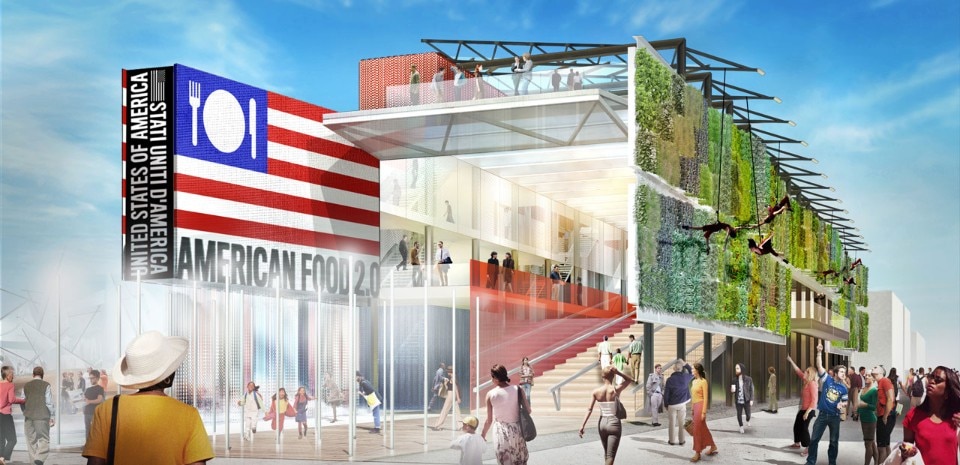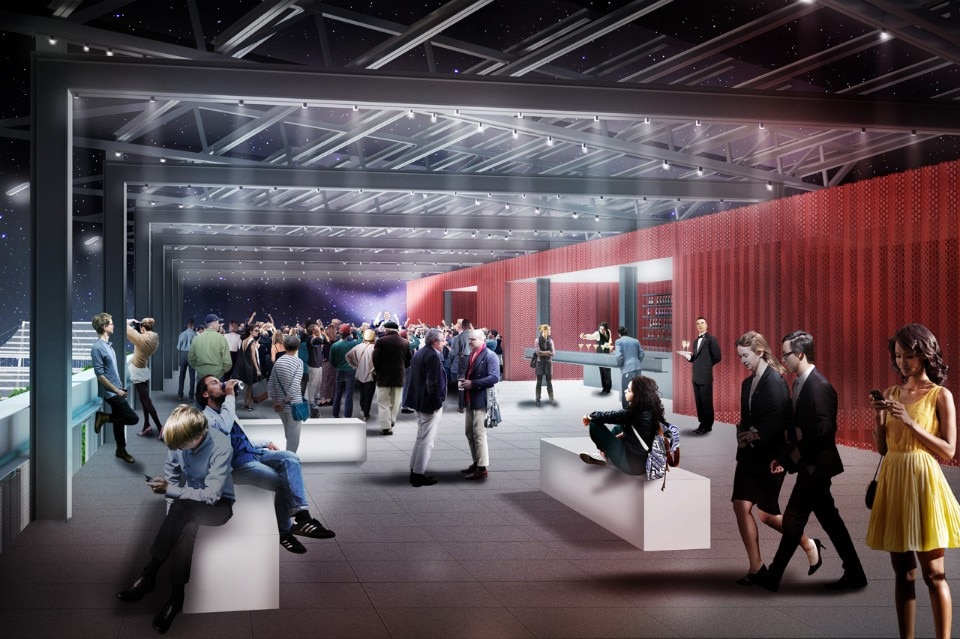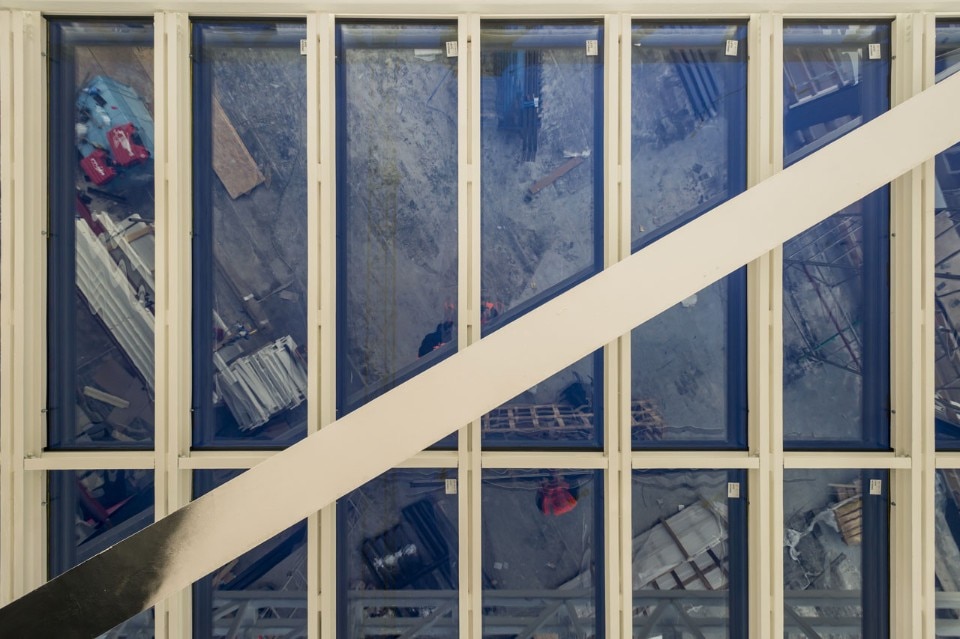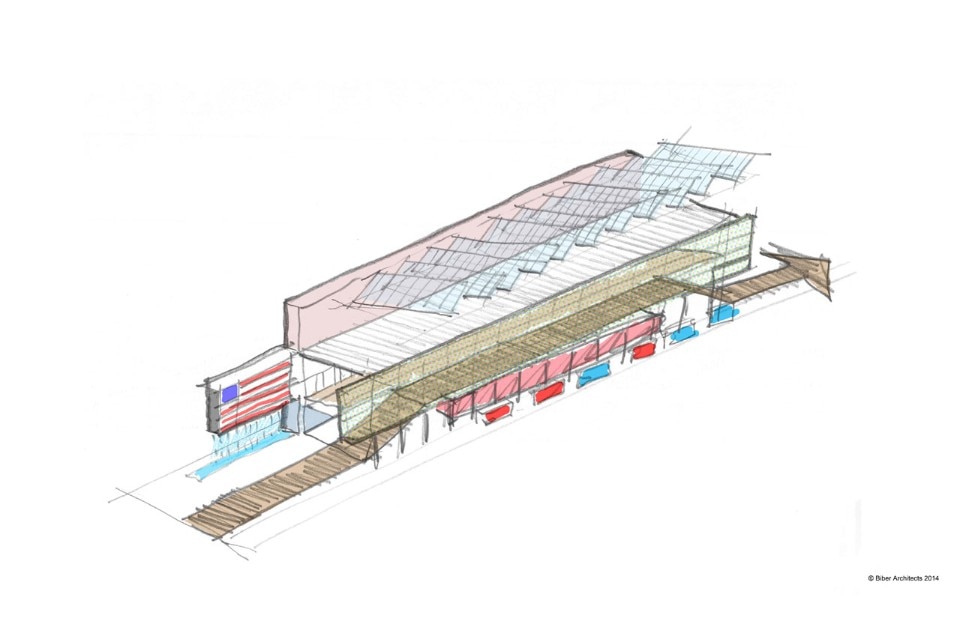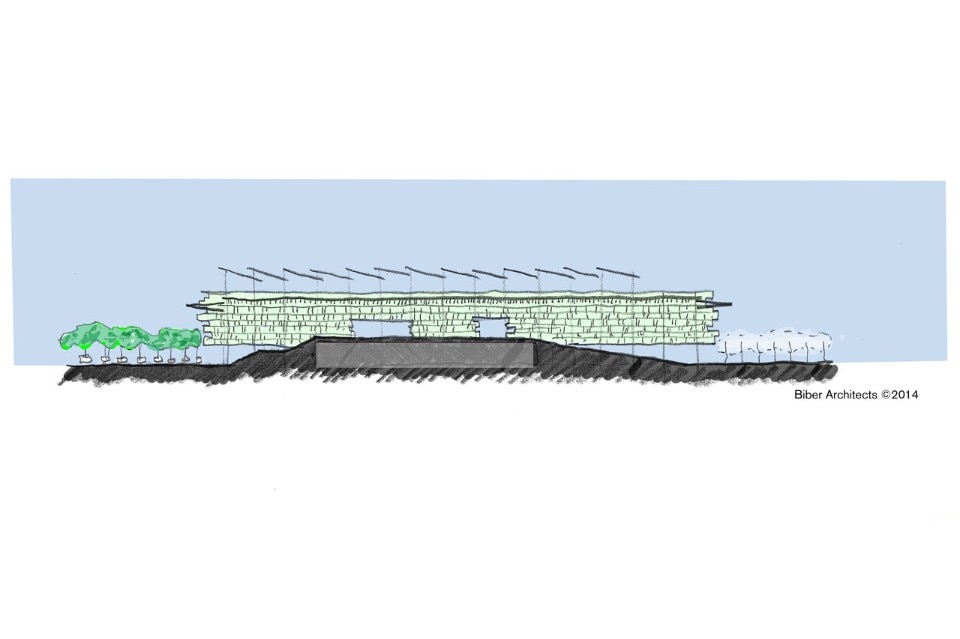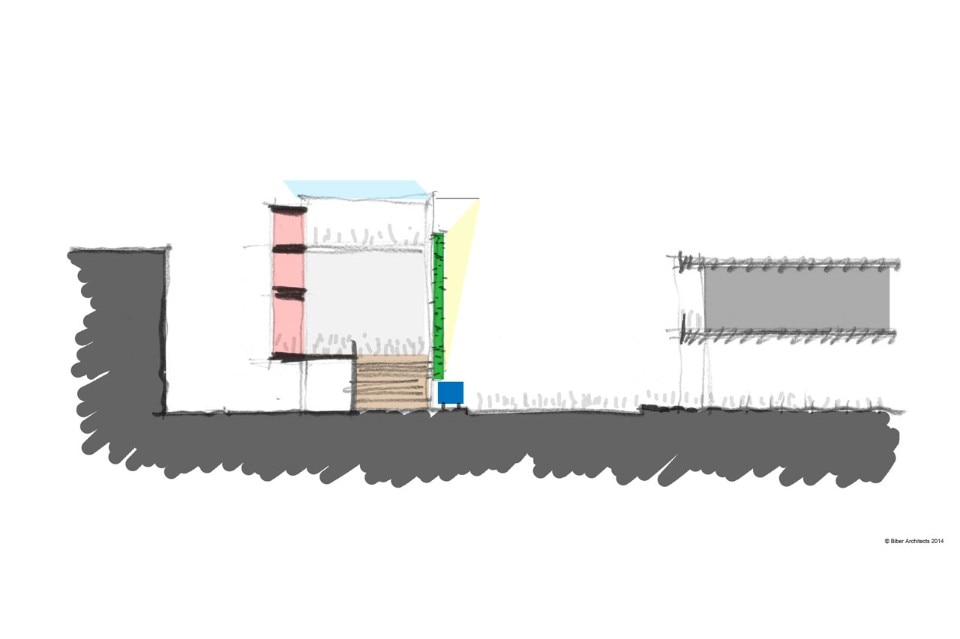“American Food 2.0: United to Feed the Planet,” tells America’s food story – one of innovation, diversity and entrepreneurship – through topics including food security and policy, international relations, science and technology, nutrition and health, and culinary culture.
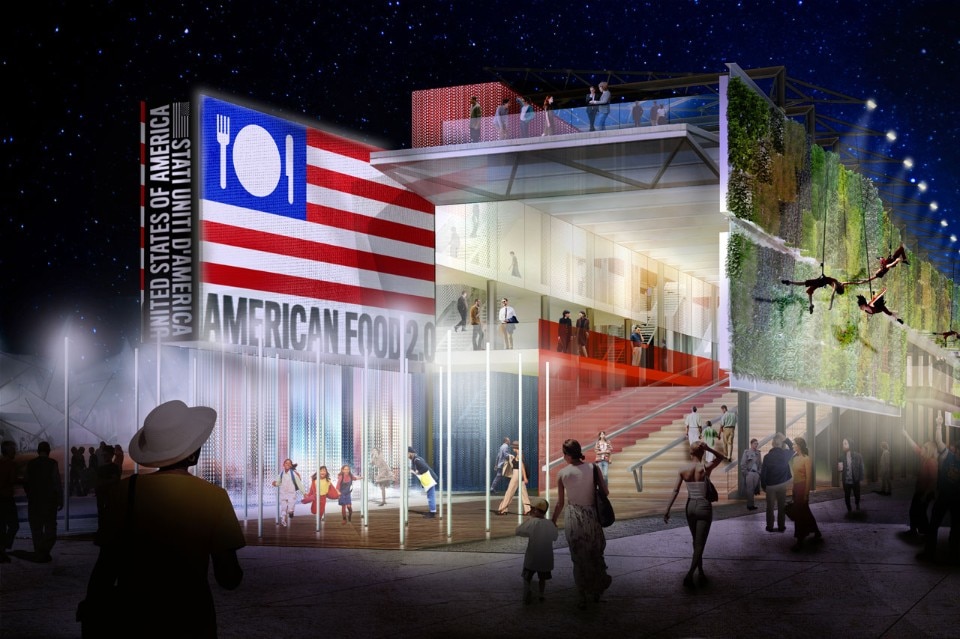
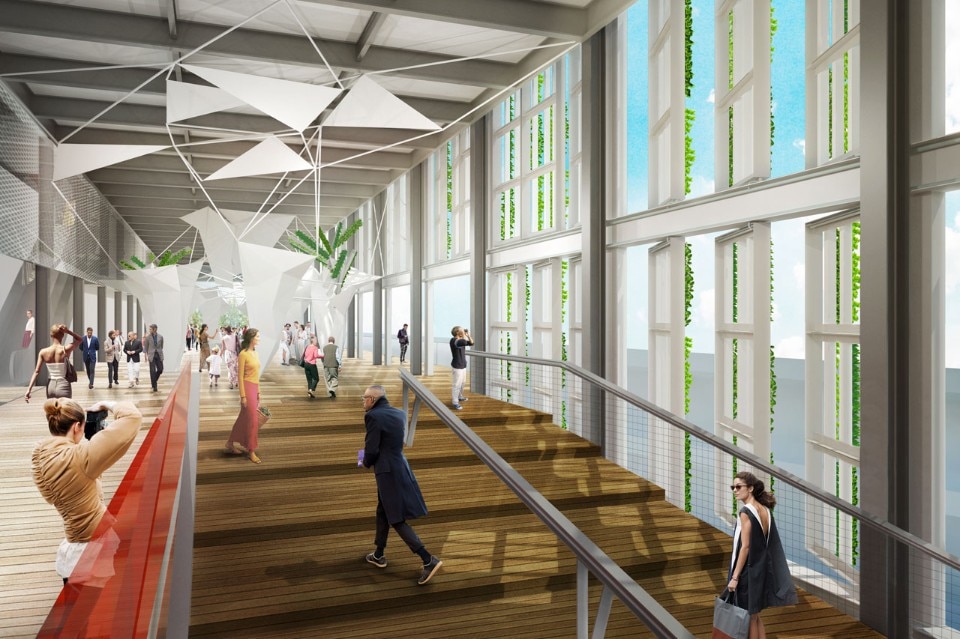
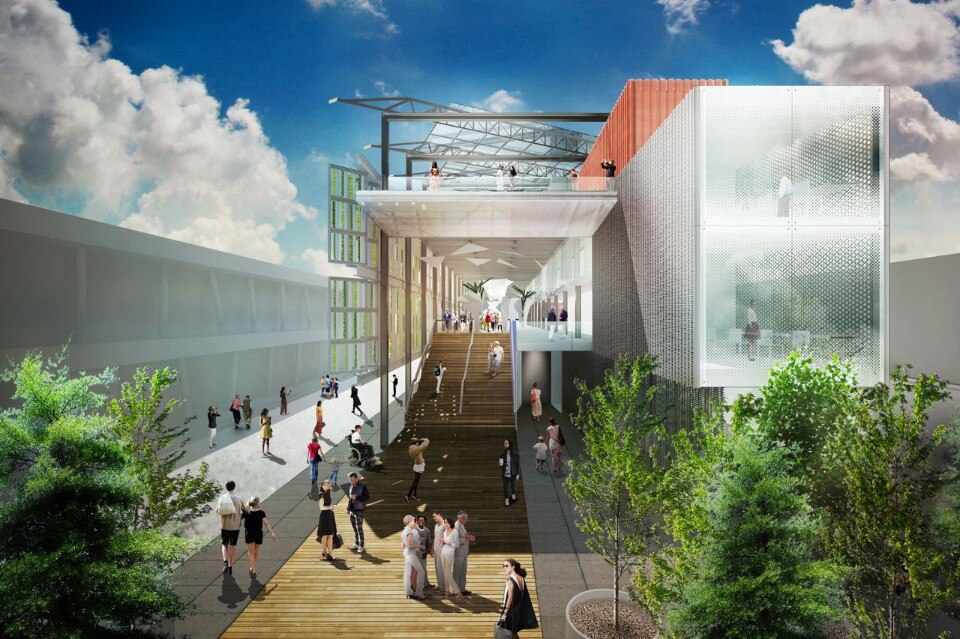
USA Pavilion, American Food 2.0, Expo Milano 2015
Client: Friends of the USA Pavilion / USA Department of State
Architect: Biber Architects
Architect in charge: James Biber FAIA
Team: Daniel Marino, Steven Grootaert, Jackie Krasnokutskaya, Suzanne Holt, Emaan Farhoud, Suzanne Lettieri, Joshua Jow, Federico Pellegrini
Architect of Record: GLA Genius Loci Architettura S.r.l.
Engineering: ESA Engineering
Structures and Systems: SCE Project
Exhibit Design: Thinc Design
Lighting Design: Tillotson Design Associates
Landscape Design: dlandstudio
Graphic Design: Pentagram
Area: approximately 3,900 sqm
Completion: 2015


